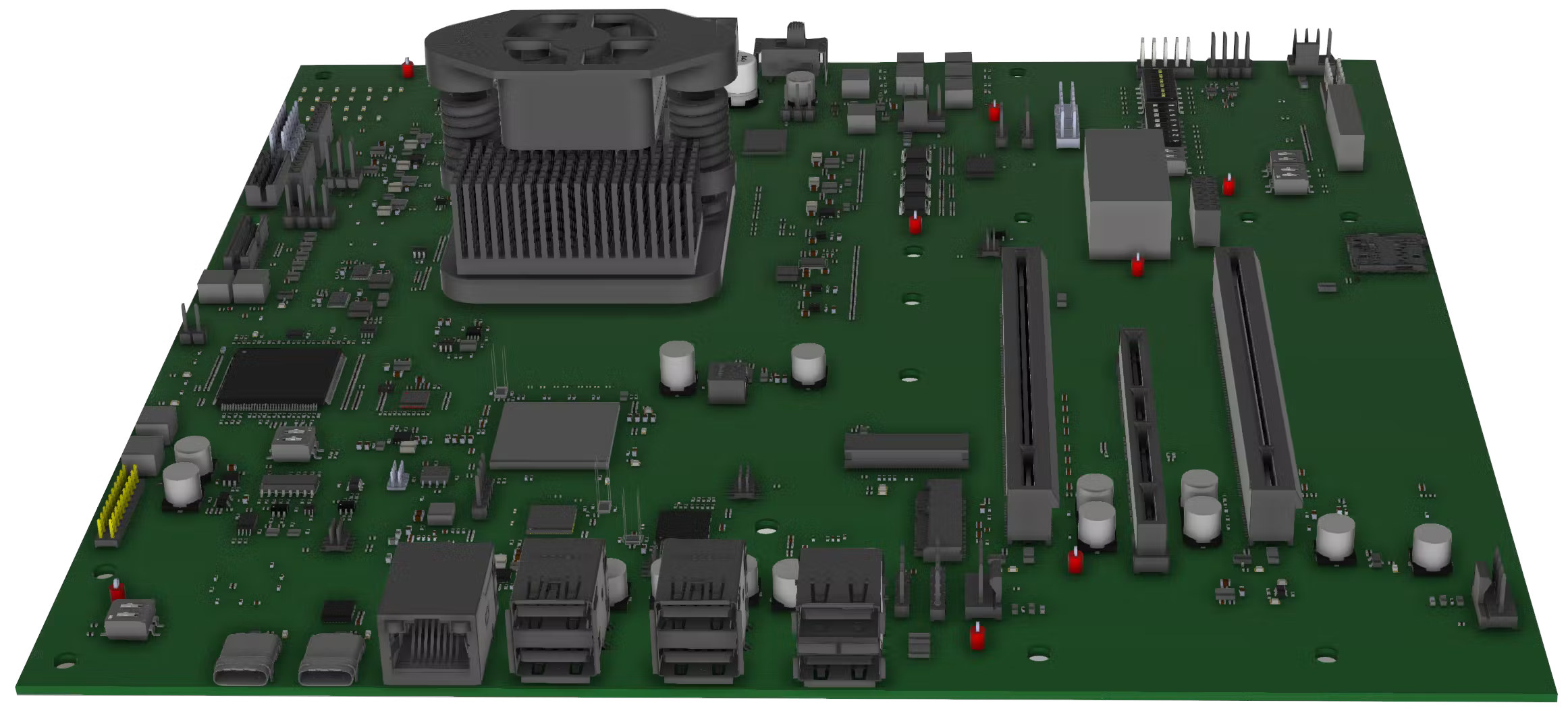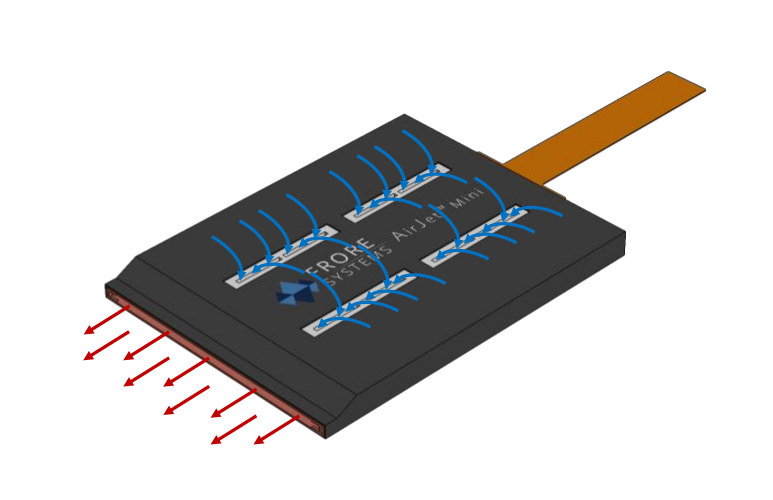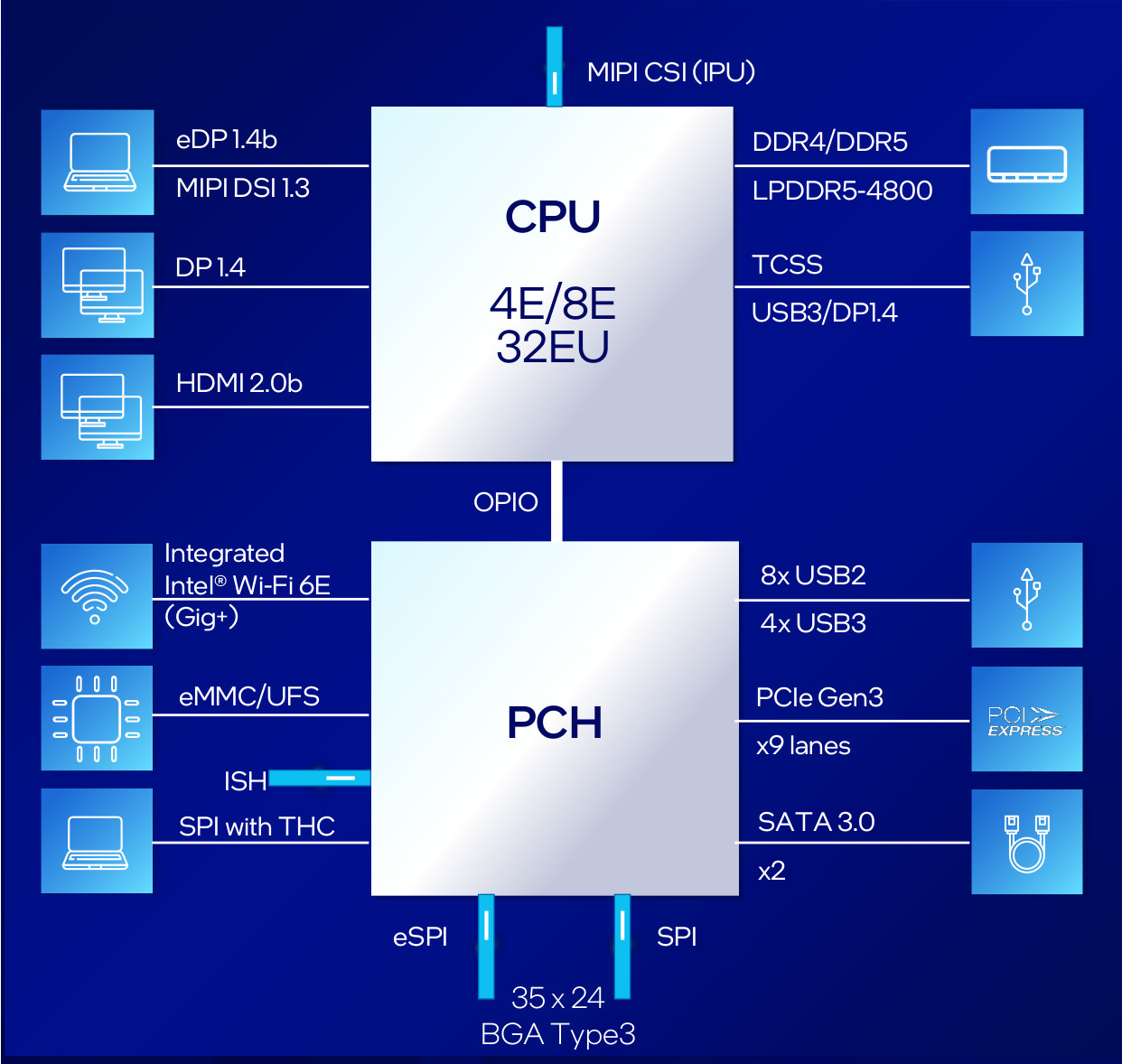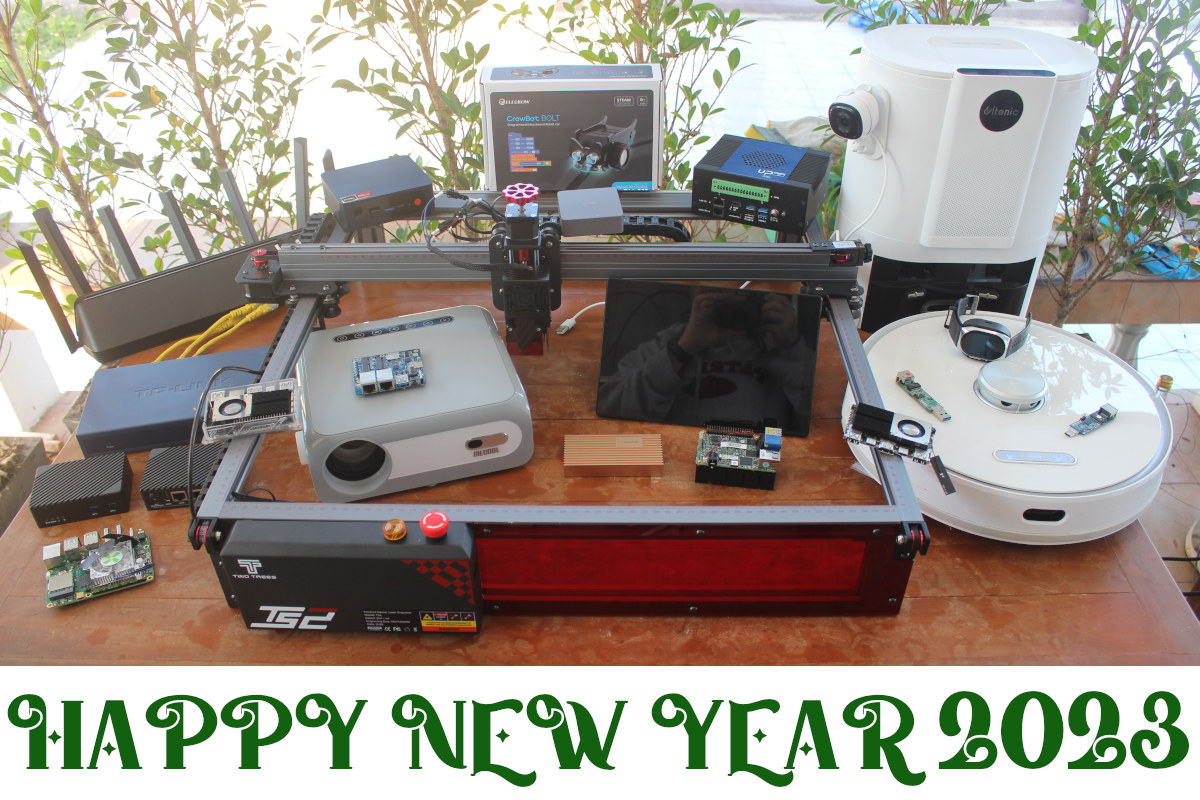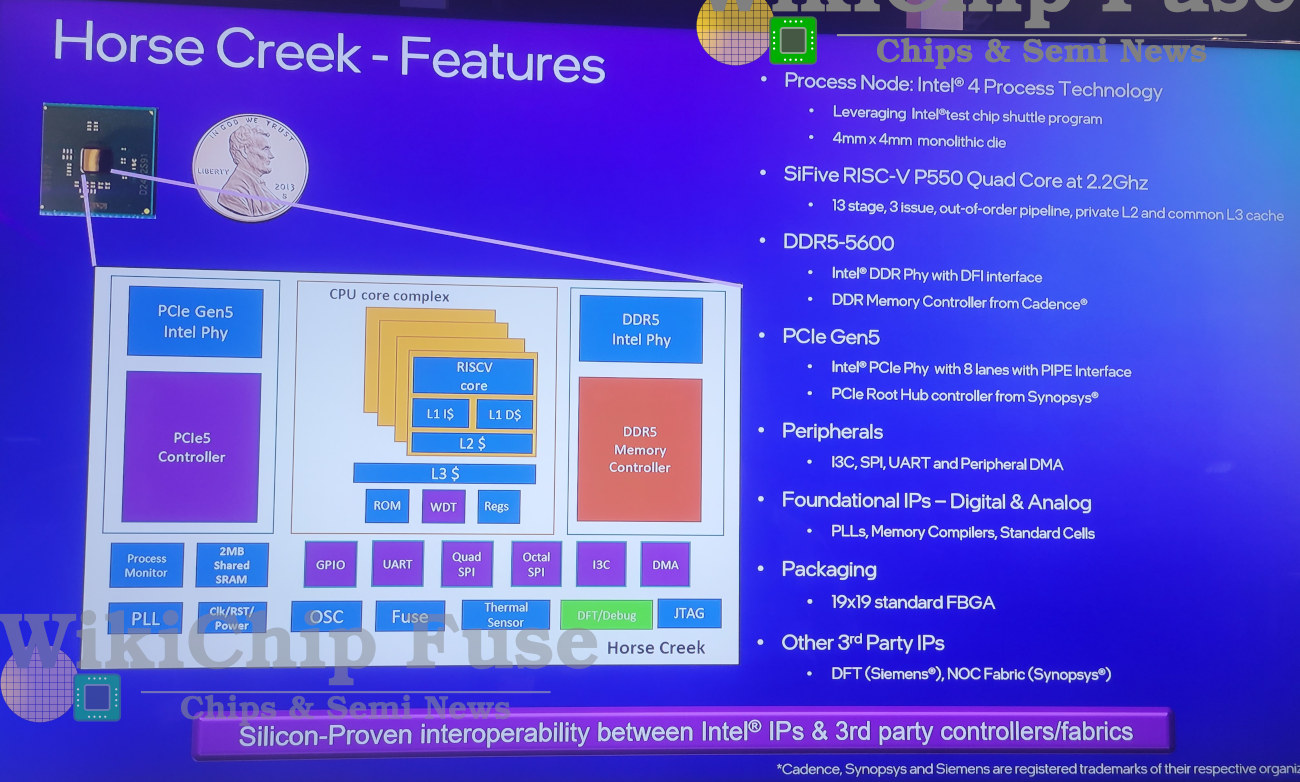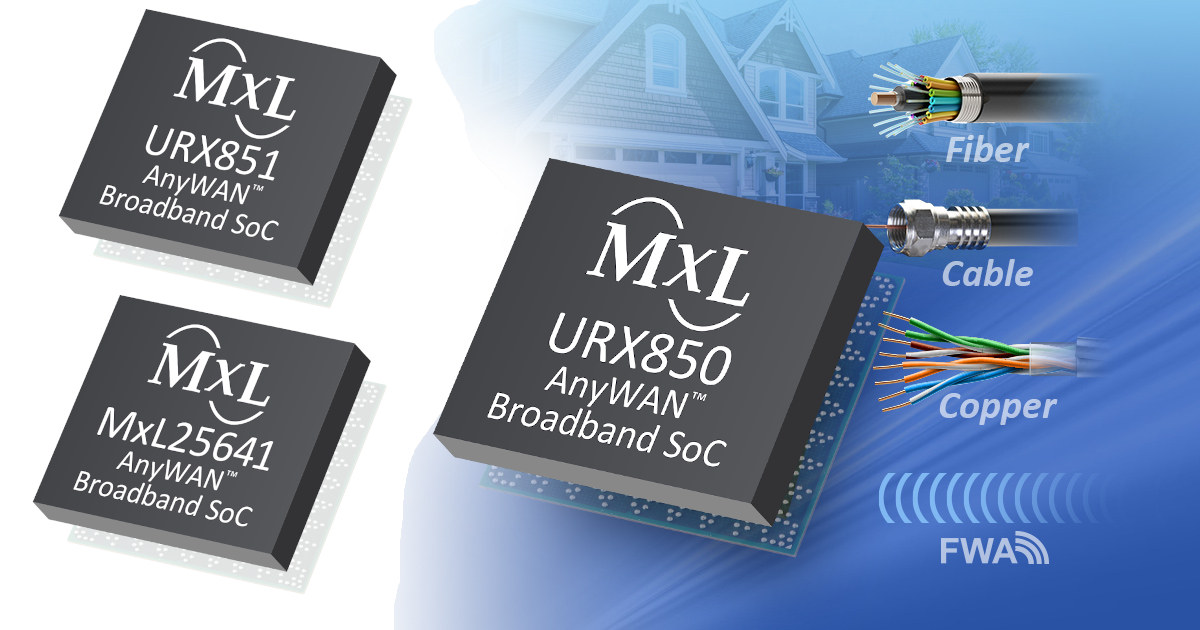Intel has just discontinued PathFinder Eclipse-based development environment for RISC-V processors with the website now reading: We regret to inform you that Intel is discontinuing the Intel Pathfinder for RISC-V program effective immediately. Since Intel will not be providing any additional releases or bug fixes, we encourage you to promptly transition to third-party RISC-V software tools that best meet your development needs. PathFinder was a pre-silicon open-source development environment with support for vairous RISC-V cores, a set of other IP’s, multiple operating systems, and toolchains. It allowed designers to create RISC-V SoCs to and run them on FPGA platforms such as the Terasic developer kit or Startix-10 GX evaluation kit. PathFinder appears to just be one of the casualties after Intel reported a loss for Q4 2022, and announced it will lose even more in Q1 2023 with Tom’s Hardware also highlighting Intel would stop investing in new products for […]
HiFive Pro P550 “Horse Creek” RISC-V motherboard with 16GB RAM to launch this summer
SiFive HiFive Pro P550 RISC-V motherboard based on Intel “Horse Creek” quad-core SiFive Performance P550 processor will launch this summer with 16GB DDR5 memory, two PCIe expansion slots, Gigabit Ethernet networking, USB 3.x ports, and on-board graphics. Intel Horse Creek platform was first revealed when SiFive unveiled the SiFive Performance P550 64-bit RISC-core with Cortex-A75 class performance in June 2021. The companies then demonstrated an internal Intel Horse Creek board with 8GB DDR5 and PCIe Gen5 at the Intel Innovation 2022 Developer Conference last October, and it looks like the 7nm RISC-V processor, manufactured with an Intel 4 process, will finally be available to developers this summer with the launch of the HiFive Pro P550 motherboard/development system. HiFive Pro P550 preliminary specifications: SoC – Intel-SiFive Horse Creek SoC equipped with 4x SiFive Performance P550 RV64GBC RISC-V cores with a 13-stage, 3-issue, out-of-order (OoO) pipeline GPU – “On-board graphics” [Update: […]
Quiet, ultrathin AirJet solid state active cooling chips could replace fans
Frore Systems Airjet Mini and Airjet Pro are active cooling chips that are just 2.8mm thick and quietly suck cool air in from the top of the chip before pushing it out the sides with the aim to replace traditional fan-based solutions in ultrabooks, or be integrated into VR headsets and smartphones for improved cooling. Yesterday we saw that cameras could clean themselves with micro-vibrations, and it happens that processors can be cooled with vibrations too as the Airjet chips are comprised of tiny membranes that vibrate at ultrasonic frequencies to generate a flow of air that enters through inlet vents in the top and transformed into high-velocity pulsating jets exiting from one side of the chip. The AirJet module is actually not placed directly on the processor in ultrabooks but on copper pipes because it allows for thinner designs that way. The company says the AirJet Mini and Pro […]
Meet Intel Processor and Core-i3 N-series “Alder Lake N-series” processors
Pentium and Celeron brands are officially dead with Intel introducing the Alder Lake-N family comprised of “Intel Processor” and Core-i3 N-series processors based on the Gracemont “Efficiency” cores found in Alder Lake hybrid processors. Some of the details about the Intel Processor N100 and N200 processors were leaked last fall, followed by the Core i3-N300 and Core i3-N305, but at least it is now official, and we have more details so let’s dig into it. Alder Lake N-series key features and specifications: CPU – Up to 8x Gracemont Efficient cores for Core i3 N-series processor, and up to 4x with Intel Processor processor GPU – Intel UHD graphics with AV1 decode support Memory I/F – LPDDR5-4800, DDR4, DDR5 Storage I/F – eMMC/UFS 2.1 flash, 2x SATA 3.0 Video Output eDP 1.4b / MIPI DSI 1.3 DisplayPort 1.4 HDMI 2.0b Up to 3x independent displays Camera I/F – MIPI CSI Networking […]
Year 2022 in review – Top 10 posts and statistics
It’s the last day of the year and the time to look at some of the highlights of 2022, some traffic statistics from CNX Software website, and speculate on what 2023 may bring us. The semiconductors shortage continued in 2022, but things are looking brighter in 2023 with the full reopening of the world mixed with forecasts of difficult economic times that should keep the demand/supply equation in check. On the Arm processor front the biggest news of the year, at least in this corner of the Internet, was the launch of the Rockchip RK3588 octa-core Cortex-A76/A55 processor together with interesting single board computers that we’ll discuss below. Announced last year, the Amlogic A311D2 octa-core Cortex-A73/A53 was finally made available in a few SBC’s, and we finally got some news about the Amlogic S928X Cortex-A76/A55 SoC showcased in 8K TV boxes, but we have yet to see it in action. […]
Intel Horse Creek platform showcased with SiFive P550 RISC-V CPU, 8GB DDR5, PCIe Gen5
When SiFive introduced its Performance P550 64-bit RISC-V processor in 2021, we were told that Intel would use it in the Horse Creek platform with “leading-edge interface IP such as DDR and PCIe” and manufactured with Intel’s 7nm process. We now have more details about the Horse Creek platform, as a development board was showcased for the first time in public at the Intel Innovation 2022 Developer Conference, and according to a report by Wikichip, the Cortex-A75 class quad-core RISC-V processor runs at up to 2.2 GHz, supports DDR5-5600 memory and eight PCIe 5.0 lanes, and was taped out with Intel 4 process. Horse Creek platform specifications: CPU – SiFive P500 quad-core RISC-V processor @ up to 2.2 GHz with a 13-stage, 3-issue, out-of-order (OoO) pipeline, private L2 cache, and common L3 cache Memory – DDR5-5600 interface PCIe – PCIe Gen5 through Intel’s PCIe PHY with 8 lanes, Synopsys PCIe […]
Intel N100 & N200 Alder Lake-N SKUs could be the first “Intel Processor” processors
Intel recently announced they would kill the Celeron and Pentium brands for entry-level PCs, and replace these with the “Intel Processor” brand for notebooks from 2023 onwards, meaning we would get “Intel Core” and “Intel Processor” processors depending on the market segment. The Intel N100 & N200, or more exactly the Intel Processor N100 and Processor N200, Alder Lake-N SKUs may be the first chips with the new branding. They were discovered by Coelacanth-Dream while looking at some Linux boot logs. Intel Processor N100:
|
1 2 3 4 |
<6>[ 0.000000] DMI: Intel Corporation Alder Lake Client Platform/AlderLake-N LP5 RVP, BIOS ADLNFWI1.R00.3301.A00.2207190854 07/19/2022 <6>[ 0.000000] tsc: Detected 800.000 MHz processor <6>[ 0.324882] smpboot: CPU0: Intel(R) N100 (family: 0x6, model: 0xbe, stepping: 0x0) <6>[ 0.335923] smp: Brought up 1 node, 4 CPUs |
Intel Processor N200:
|
1 2 3 4 |
<6>[ 0.000000] DMI: Intel Corporation Alder Lake Client Platform/AlderLake-N LP5 RVP, BIOS ADLNFWI1.R00.3301.A00.2207190854 07/19/2022 <6>[ 0.000000] tsc: Detected 1000.000 MHz processor <6>[ 0.319625] smpboot: CPU0: Intel(R) N200 (family: 0x6, model: 0xbe, stepping: 0x0) <6>[ 0.430132] smp: Brought up 1 node, 4 CPUs |
Both processors appear pretty similar but the boot logs show the N100 with an 800 MHz base frequency, and the N200 with a 1,000 MHz base frequency. Coelacanth-Dream further analyzed the data and found extra information about the Alder Lake-N processors as shown in the table below. The new SKUs will not feature “big” Performance cores at all, and only […]
MaxLinear AnyWAN URX850, URX851, and MxL25641 Intel Atom SoCs target broadband routers and gateways
MaxLinear has just announced the availability of the first three AnyWAN broadband SoCs featuring Intel Atom cores with the MxL25641, URX850, and URX851 processors designed for 5Gbps and 10 Gbps broadband routers and gateways, usually referred to as CPEs (customer premise equipment). When I first read the news of MaxLinear releasing Intel Atom SoCs, I could not quite compute how it was possible, as I can’t remember any third-party releasing Intel processors and I thought it might be a system-in-package instead. But MaxLinear keeps calling those Intel Atom SoCs, and the reason is that the company acquired Intel’s Home Gateway Platform Division in 2020. MaxLinear AnyWAN x86 SoCs key features and specifications: AnyWAN URX850/URX851 (for 10Gbps systems) CPU – 4x Intel Atom CPU cores @ 2 GHz Memory – Up to 16GB LPDDR4 or DDR4 Storage – eMMC 5.1 flash Networking 4x 2.5GE PHYs XFI WAN Packet processor for full […]



